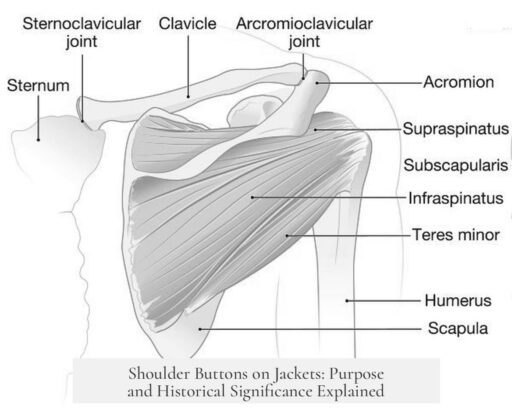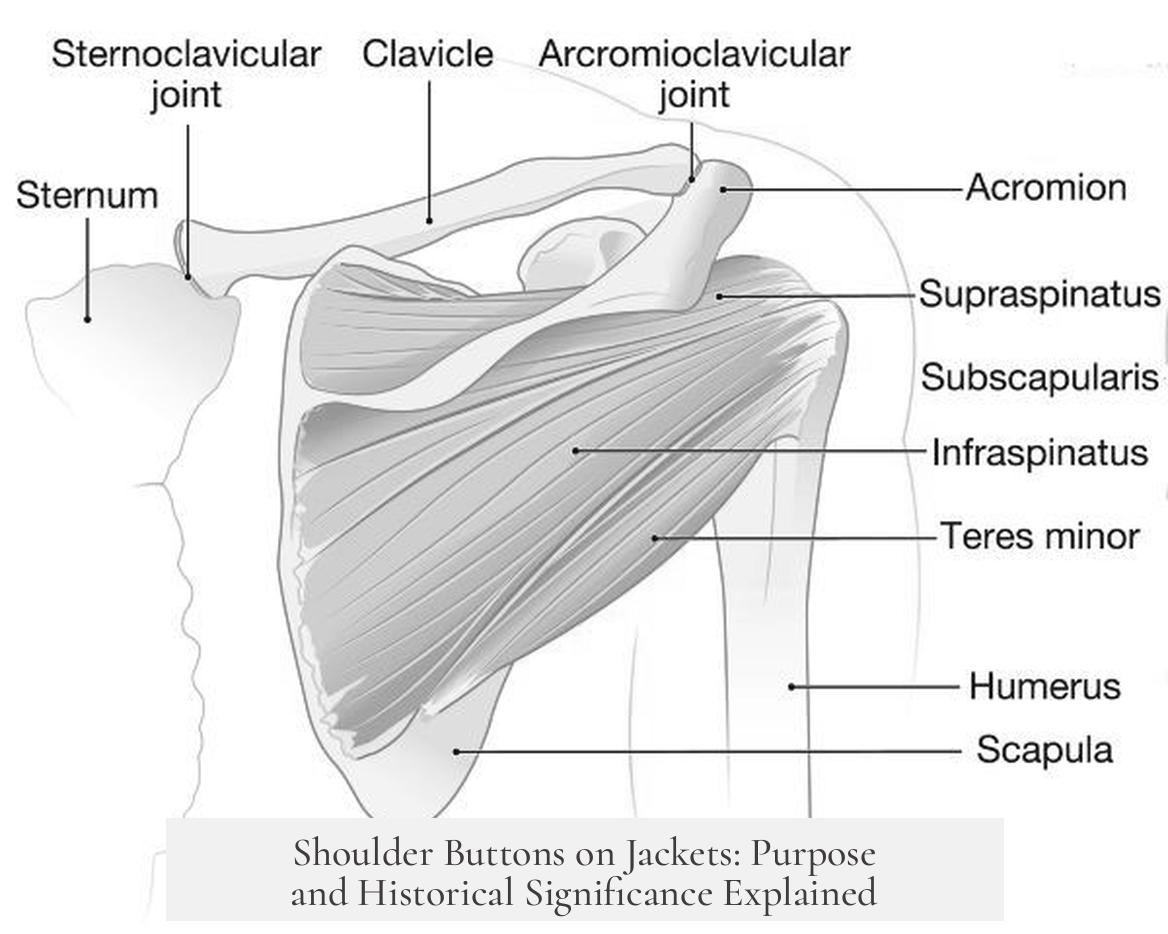Shoulder buttons on jackets originally serve practical and decorative purposes. They began as functional features to secure equipment but later evolved into symbols of rank and decorative elements on military uniforms.
The origin of shoulder buttons, often attached to what are called shoulder straps, traces back to the 17th and 18th centuries. One leading theory suggests these straps started as ribbon bunches. These ribbons held shoulder belts in place, tied in bows with fringed ends hanging down for decoration. Another less supported idea is that shoulder straps evolved from pieces of shoulder armor, but evidence for this is weak.
By the 18th century, shoulder straps had become essential for attaching epaulettes. Epaulettes are large, ornamental pieces worn on shoulders—made of metal or cloth—indicating rank in many European armies, especially French and British. The position and style of epaulettes, such as on the left or right shoulder, or the presence of a “counter-epaulette” on the opposite side, helped distinguish officer rank.
However, epaulettes had drawbacks. They were expensive and made officers more visible targets during battle. To address this, in 1831, the American Army replaced epaulettes with five-sided cloth shoulder straps, sewn into the shoulder seam but fastened with buttons like epaulettes. Later, shoulder boards and shoulder marks—cloth tubes slid over shoulder straps and embroidered with rank insignia—became common. Despite these adaptations, the shoulder straps remained largely decorative during this period.
Practical use of shoulder buttons and straps, especially for carrying equipment, is debated. Wikipedia claims shoulder straps held backpacks, ammunition pouches, or bayonets in place, but this lacks solid citation. However, photographic evidence from World War I shows mixed usage. Some soldiers wore their backpacks over the straps, not using them to secure gear, while others had ammunition belts or bandoliers placed under their shoulder straps, suggesting these straps helped keep equipment stable.
Over time, shoulder straps shift roles:
- 17th century: Mainly practical, helping hold gear in place.
- 18th century: Mostly decorative, focusing on rank display.
- Late 19th to early 20th century: Some return to practical use.
The shape and fastening style of shoulder straps reflect their role in replacing bulky epaulettes with streamlined rank insignia holders. They are not primarily designed to secure equipment, but to allow rank markings to be displayed visibly.
Uniforms such as greatcoats, thick outerwear used in colder weather, frequently feature shoulder straps. These straps help keep various items in position:
- Sword scabbards mounted on the shoulder
- Holsters
- Webbing belts and suspenders holding immediate gear
- Backpacks
- Decorative cords and rank insignia
This system became nearly universal in Western military dress from the late 1700s until around the mid-1900s. Shoulder straps provide a consistent solution for soldiers to securely carry essential equipment while maintaining uniform appearance.
One key element involved in this setup is the “webbing,” a system combining a belt and suspenders to hold multiple pouches and sheaths. For example, the British Redcoat during the Napoleonic Wars wore bright uniforms with white webbing straps, which held bayonets, canteens, ammunition boxes, and other supplies. The shoulder straps ensured this webbing and attached gear stayed put. They also made a striking contribution to the soldier’s distinguished look.
During World War II, uniforms began to evolve. Webbing components were gradually phased out in favor of combat jackets or jump jackets, shorter coats with many external pockets. These designs, pioneered by paratroopers, offered easier access to equipment without bulky belts and suspenders. Over time, this practical innovation changed how military uniforms looked and functioned on the battlefield, reducing the need for traditional shoulder straps for securing gear.
| Period | Primary Function of Shoulder Buttons/Straps |
|---|---|
| 17th Century | Practical: Held belts and equipment ribbons |
| 18th Century | Decorative: Supported epaulettes and rank display |
| 19th Century | Transitional: Replaced epaulettes with shoulder straps; both decorative and practical |
| Early 20th Century | Practical and decorative: Secured webbing and gear as well as showing rank insignia |
| Mid 20th Century onwards | Practical use reduced; transition to combat jackets with pockets |
Today, shoulder buttons on jackets—whether military-inspired or in fashion—are often decorative or derived from this historical military function. They recall the past role of securing gear and showing rank but tend not to hold equipment on modern garments.
- Shoulder buttons originate from 17th-century shoulder straps, partly practical and decorative.
- They evolved to hold epaulettes and display rank during the 18th century.
- American Army replaced epaulettes with buttoned cloth shoulder straps in 1831.
- They helped secure webbing, pouches, backpacks, and other gear into the early 20th century.
- By mid-20th century, practical use declined as combat jackets with pockets replaced traditional webbing.
- Modern shoulder buttons mainly serve decorative or traditional purposes.




